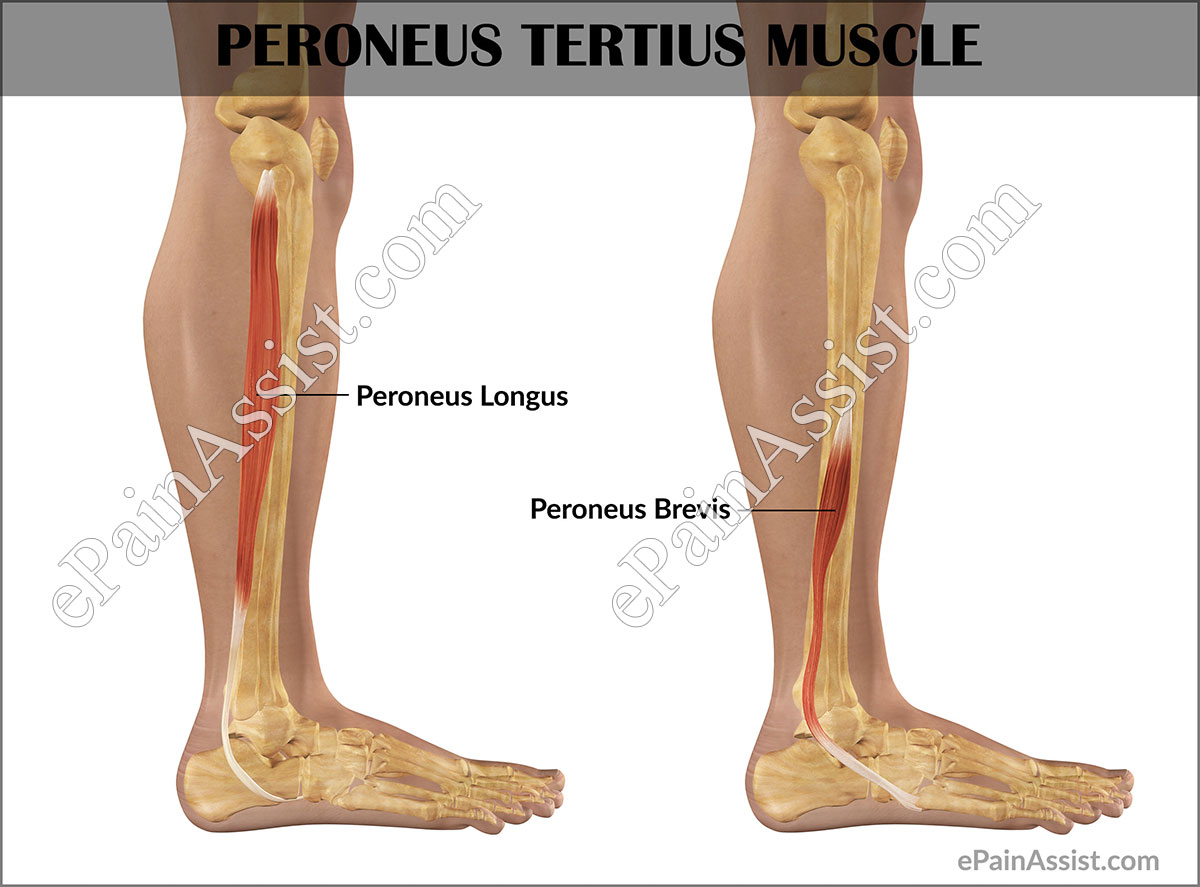What is Peroneus Tertius Muscle and What is its Function?[1]
The Peroneus Tertius Muscle is also known by the name of Fibularis tertius Muscle. This muscle is located in the front part of the lower leg. It is attached at the top end to the fibula and at the lower end to the metatarsal bones. The Peroneus Tertius muscle is innervated by the deep fibular nerve. The main function of this muscle is to promote dorsiflexion of the toes and eversion of the foot. Any sort of damage or injury to the Peroneus Tertius Muscle will result in ankle and heel pain and problems with ambulation. A strain or injury can be caused to the Peroneus Tertius Muscle due to overuse. This is seen in people who are involved with long distance running where they have to run even on uneven surfaces. Prolonged standing at one place without any movement such as those people who work as greeters or security guards can also injure or strain the Peroneus Tertius Muscle. Treatment for Peroneus Tertius Strain or Peroneus Tertius Pain is normally conservative with use of NSAIDs, hot and cold packs, gentle stretching exercises and not putting weight on the affected foot for a few days.

Signs and Symptoms of Peroneus Tertius Strain[2]
Some of the symptoms which point to Peroneus Tertius Strain are:
- One of the symptoms of Peroneus Tertius Strain is severe pain in the front part of the leg and outer part of the ankle
- Severe pain on the outer part of the heel
- Severe ankle and instability of the ankles
What Can Cause Peroneus Tertius Strain?[3]
Some of the activities that can cause Peroneus Tertius Strain or Peroneus Tertius Pain are:
- Sudden forceful twisting motion of the ankle can cause peroneus tertius strain or pain
- Prolonged immobilization of the leg such as during a fracture
- Frequent and persistent leg crossing behavior can cause Peroneus Tertius Strain
- Wearing tight bands around the leg
- Wearing high heels
Risk Factors of Peroneus Tertius Strain
Some of the medical conditions that may cause Peroneus Tertius Strain are:
- Peroneal Nerve Entrapment
- Diabetic neuropathy
- Lateral Compartment Syndrome
- Ankle Sprains
- Gout
- Plantar fasciitis
- Achilles tendon rupture.
What is the Treatment for Peroneus Tertius Strain?[4]
Adequate Rest: The first and foremost treatment for Peroneus Tertius Strain is a period of complete rest where no weight or pressure should be put on the affected foot and ankle for a period of about a week. This allows the muscle to heal and the inflammation and swelling to calm down. The pain will also be controlled during this period of rest.
Hot/Cold Packs to Treat Peroneus Tertius Strain: The next step towards treatment is application of hot and cold packs. The patient can apply ice packs to the affected area for 15-20 minutes two to three times a day. The patient may also apply warm compresses to the affected foot a few times a day to reduce swelling and inflammation and to also allow the muscle to heal faster. It should be noted here that hot and cold packs should not be applied simultaneously.
NSAIDS to Treat Peroneus Tertius Strain: During this period of immobilization, the patient suffering from Peroneus Tertius Strain can take anti-inflammatory medications in the form of ibuprofen to control pain and swelling and reduce inflammation associated with strained peroneus tertius muscle.
Exercises: After about a week of nonweightbearing on the affected foot, the patient may start gentle stretching exercises of the affected foot to regain lost flexibility and strength of the foot. The patient may do these exercises to tolerance and allow the pain to be their guide.
What is the Recovery Period for Peroneus Tertius Strain?[5]
Usually, it takes about a couple of weeks for the Peroneus Tertius Strain to resolve. After about a week of immobilization the patient may start to partially weight bear on the affected foot and then depending on the symptoms the patient may gradually return back to normal activities after recuperating from a strained Peroneus Tertius Muscle.
